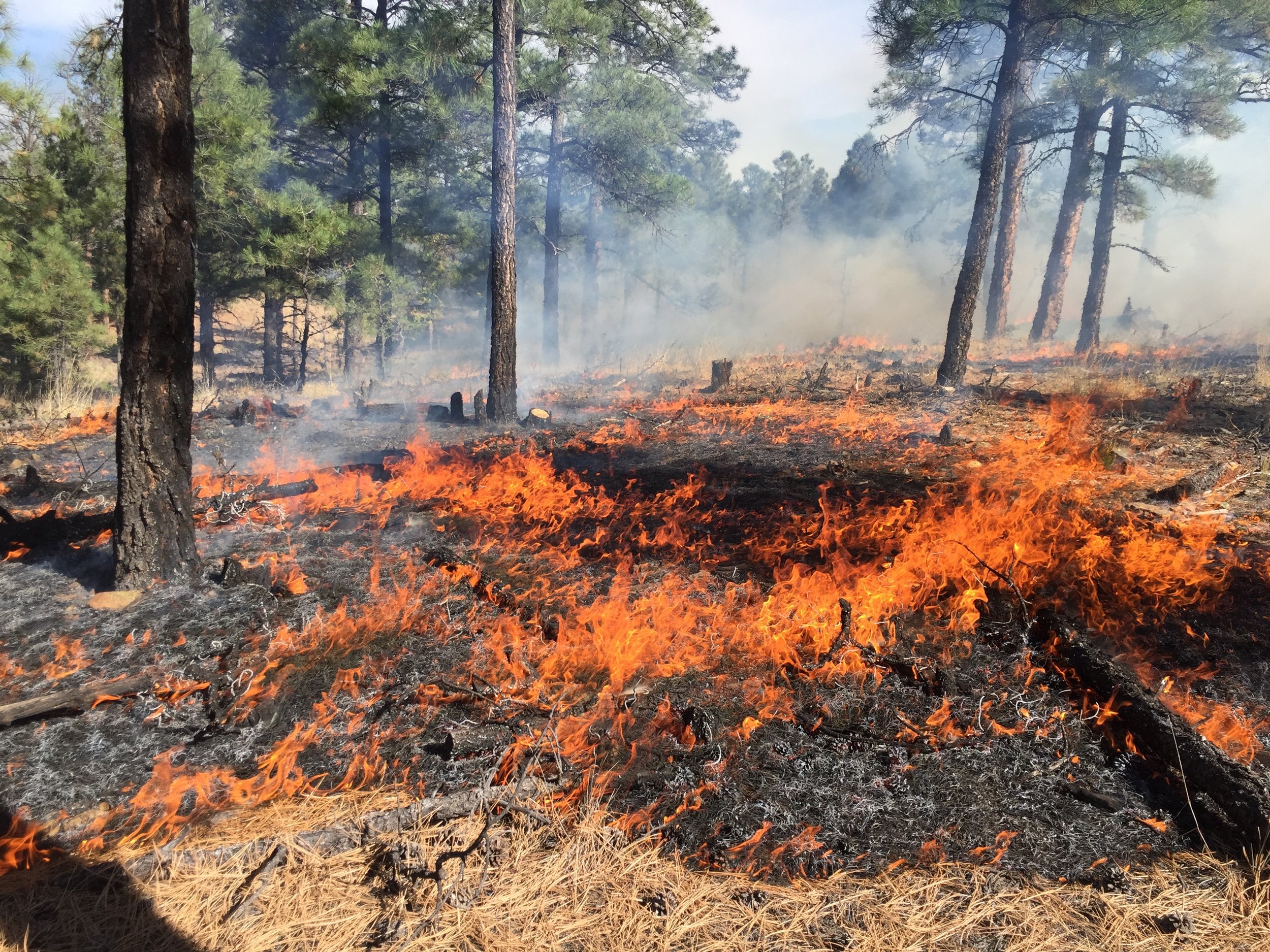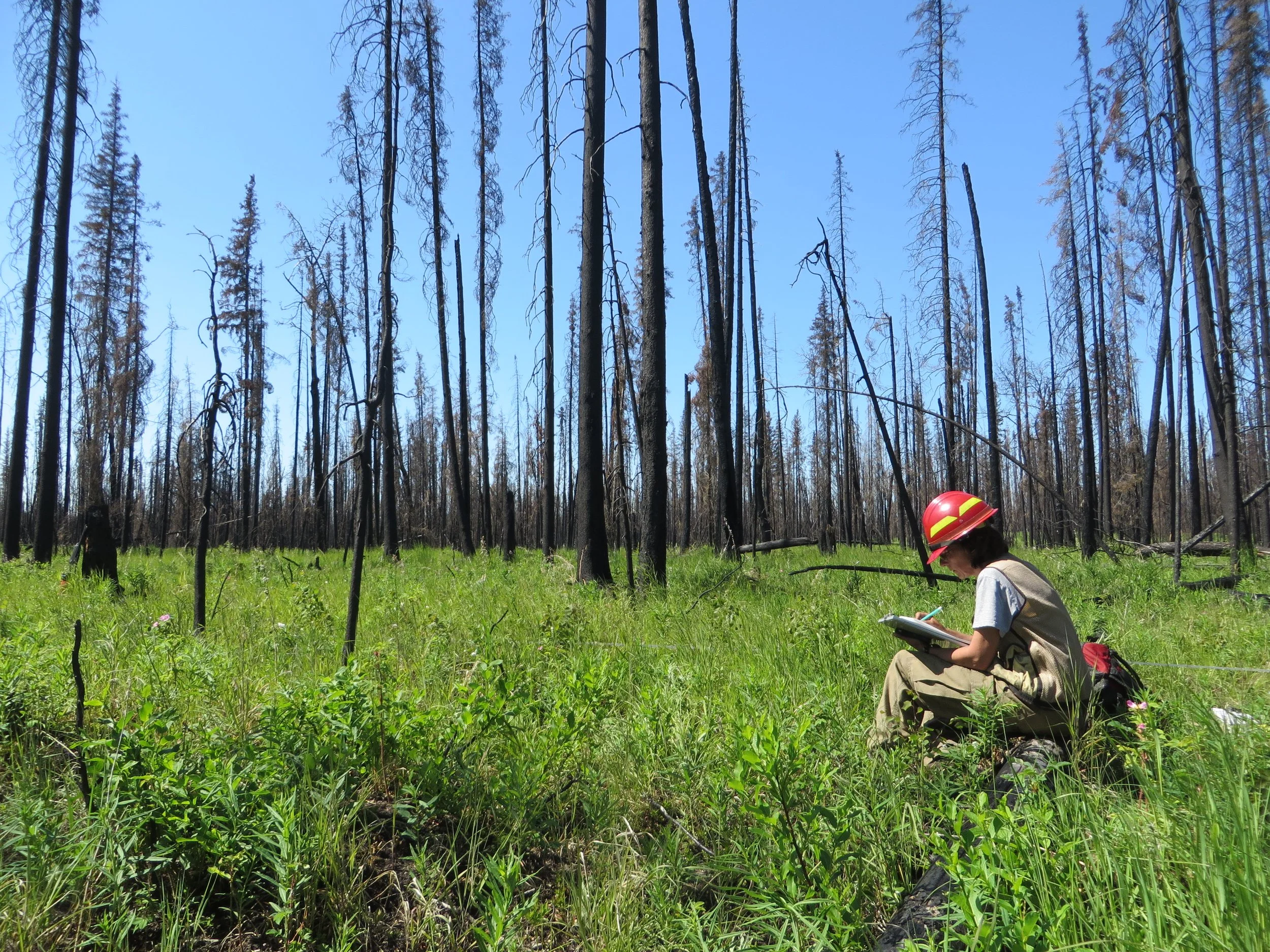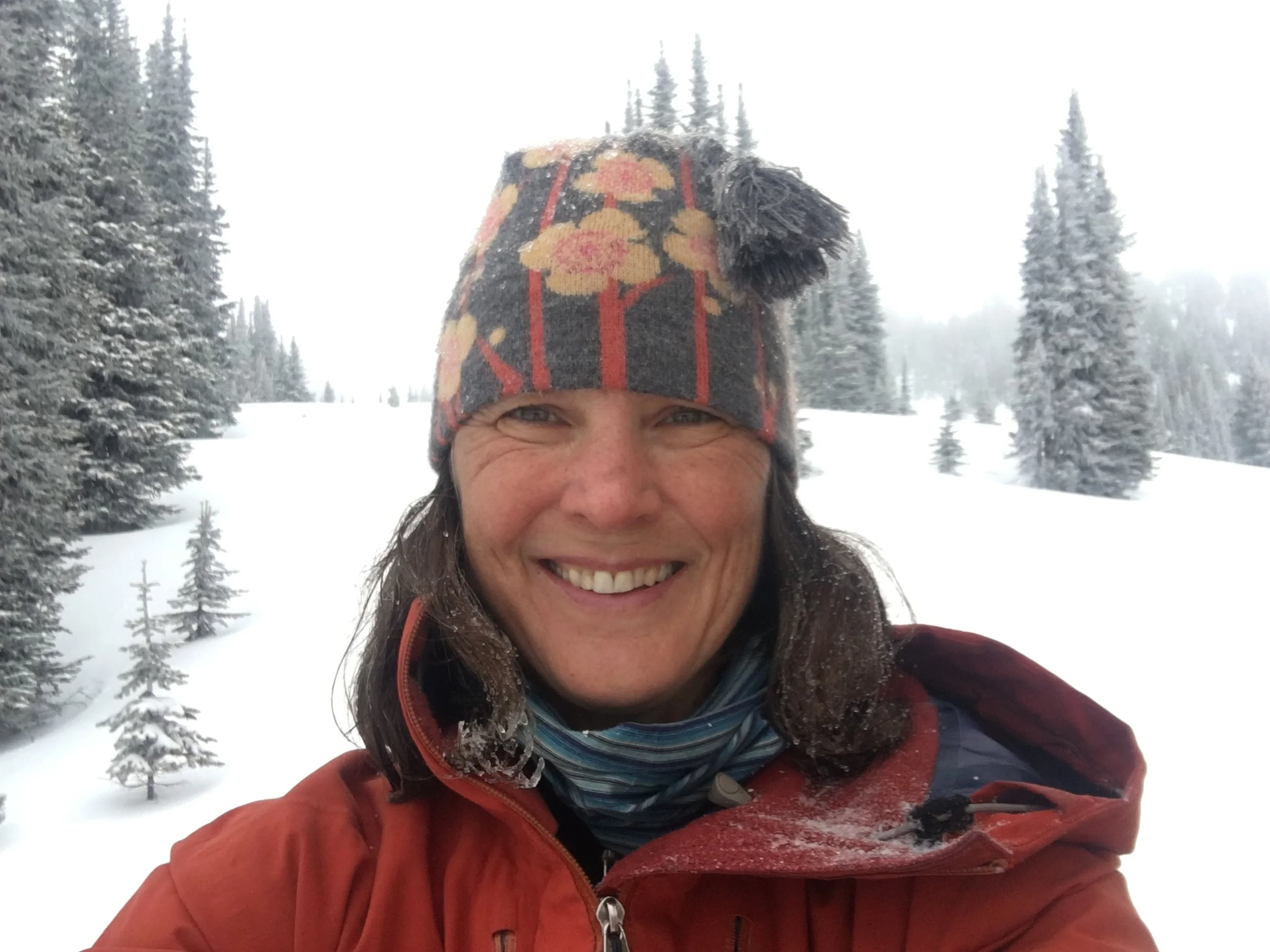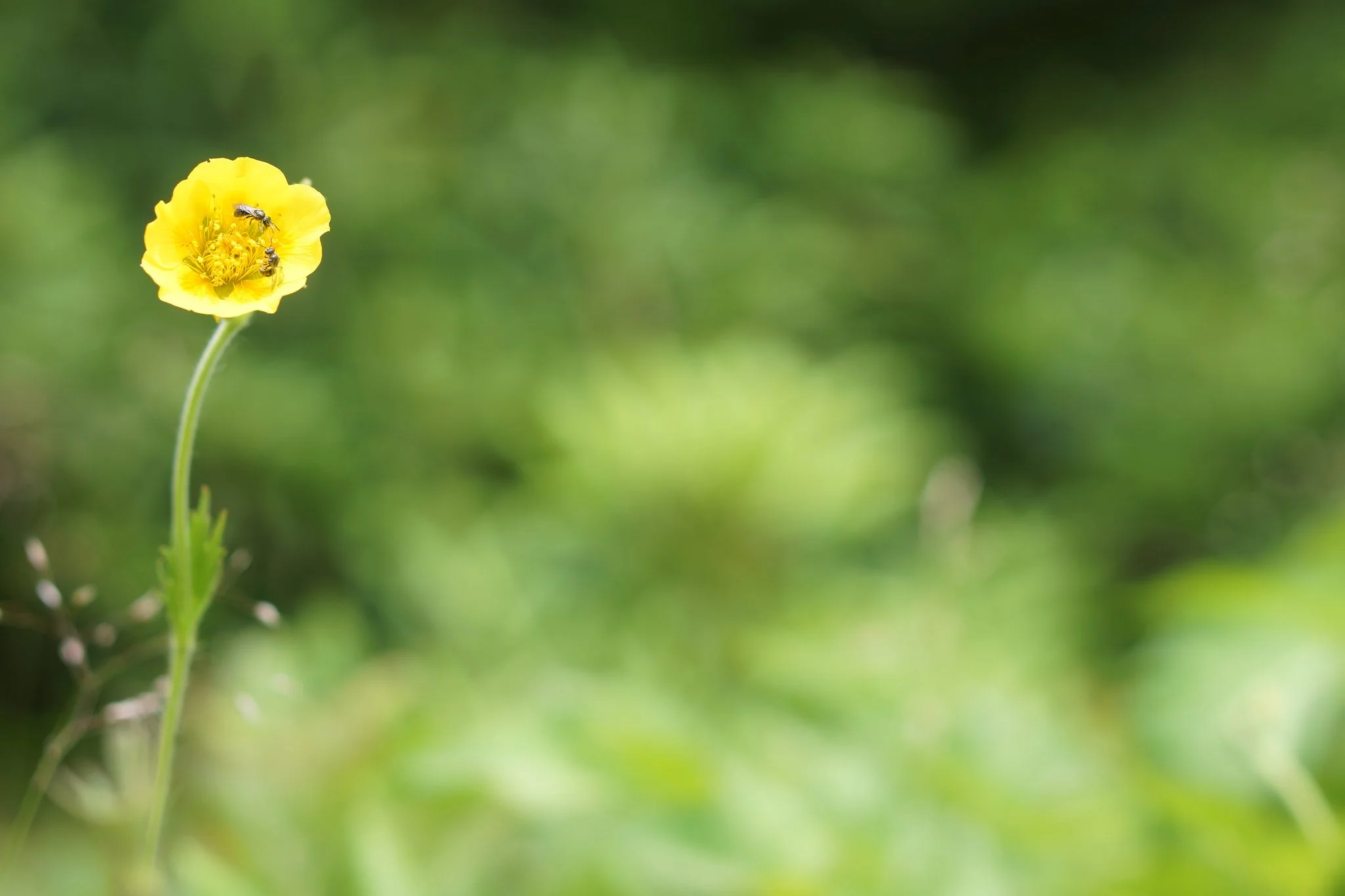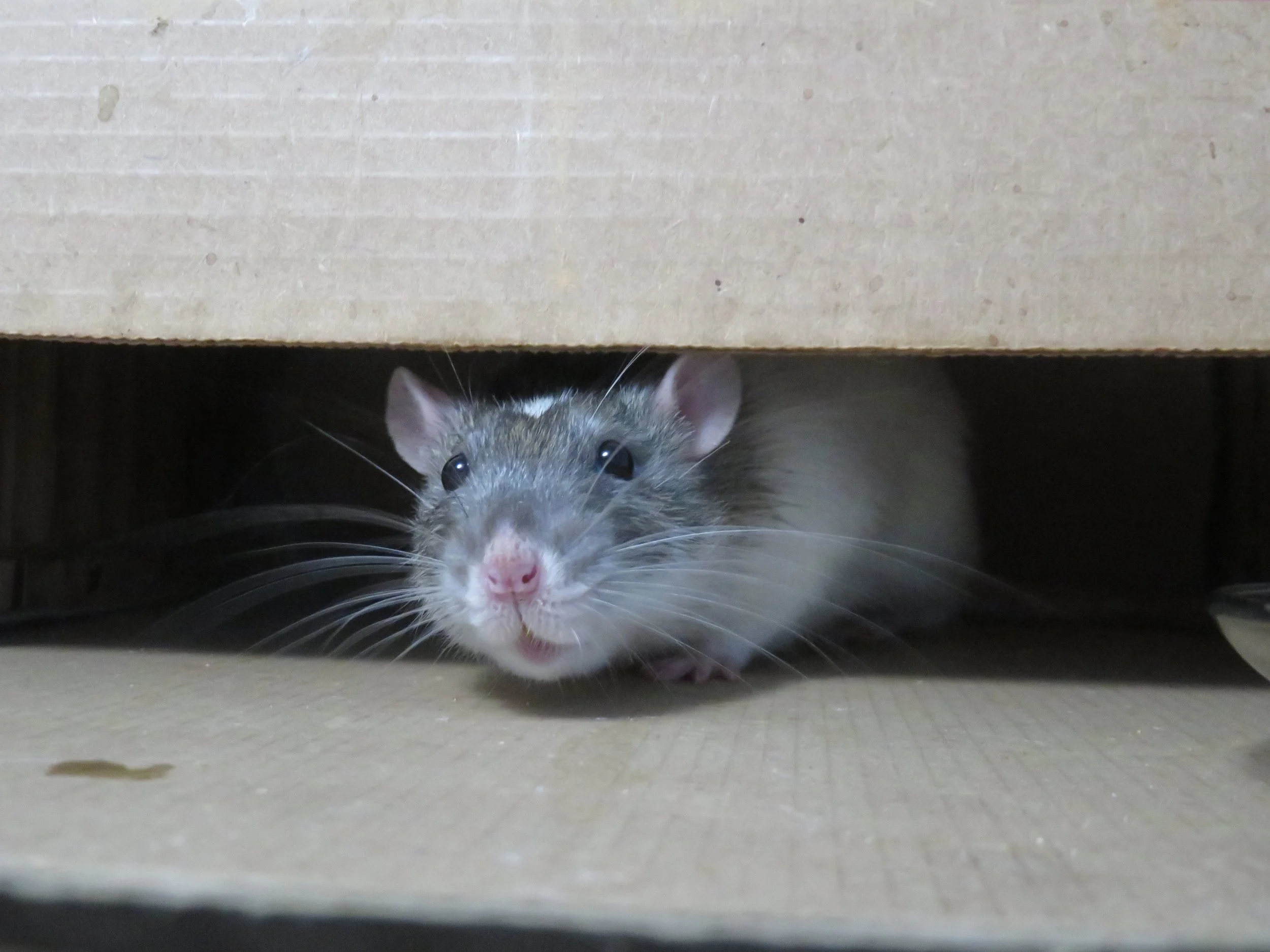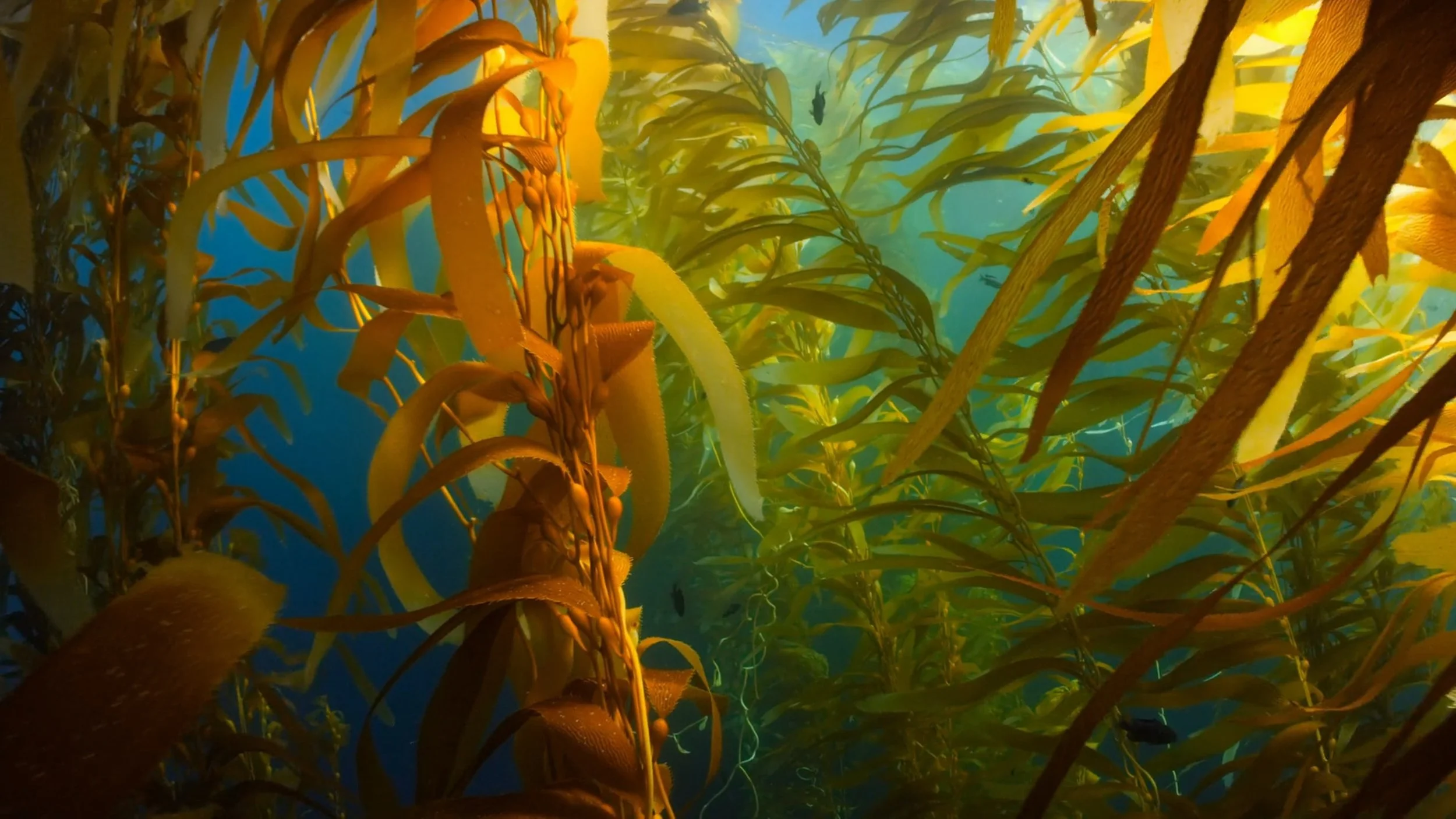Ecological Resilience and Resistance
For some ecosystems, it’s not as simple as bouncing back
The thick bark of the ponderosa pine along with the absence of lower branches keeps the tree relatively resistant to wildfires. Image credit: United States Geological Survey.
By Katherine Strickler
December 15, 2022
Climate change resilience. Psychological resilience. Resilience in business management and leadership. Everyone is talking about resilience, but what does it really mean?
In the world of ecology, defining resilience isn’t straightforward. Ecological resilience can apply to changes within ecosystems, biological communities, species, populations, or even individuals. The natural world isn’t simple, and neither is ecological resilience.
Resilience is about how a system responds to disturbances. Whether natural or human-caused, a disturbance is a relatively short, intense change in environmental conditions that causes pervasive changes in the system. Disturbances aren’t necessarily bad; many natural disturbances, such as fires and floods, play vital roles in creating and maintaining ecosystems.
Resilience and resistance
The “resistance-resilience framework” helps us understand ecological resilience and the role resistance plays. It’s easy to confuse these two closely related concepts of ecosystem change: resistance is the ability to persist or withstand a disturbance, and resilience is the ability to recover once a disturbance ends. Let’s look at how some North American forests respond to fire as a disturbance.
A fire scientist at the United States Geological Survey measures the effects of the Funny River Fire on the Kenai Peninsula, Alaska. Image credit: Rachel Loehman, USGS.
Ponderosa pine woodlands, found throughout the mountains of the West, are resistant to periodic wildfires. The thick bark of mature ponderosa pines protects them from being killed by light fires. Lower branches fall off as trees age, protecting older trees from the frequent ground fires that have historically maintained the ecosystem. Ponderosa pines also grow in relatively low densities, which prevents fire from spreading tree-to-tree.
Lodgepole pines, on the other hand, have thin bark and die easily in a fire. They grow in dense stands that make it easy for flames to spread through the forest, yet they are resilient to fire. Fires in lodgepole forests are typically bigger and hotter than those in ponderosa woodlands.
Lodgepole pines’ resilience lies in their cones: they’re glued shut with a resin that protects the seeds. High temperatures during a fire melt the resin and release the seeds onto the forest floor. The fire clears the ground of plants that could have competed for space, nutrients, and sunlight. This allows lodgepole pines to get the jump on species that are less fire-adapted and to take advantage of the rich soil and sunlight of the burned forest.
Resistance or resilience to disturbances helps ecosystems remain in or return to their pre-disturbance state. It’s possible, though, that a significant disturbance could move the system so far from its original equilibrium that it flips to a new, completely different set of conditions — a new ecological state.
Shifting ecosystems
The idea of ecological resilience and multiple stable states goes back to the late 1960s. C.S. Holling, a theoretical ecologist, described ecological resilience as the amount of disturbance a system can absorb without changing to a new stable state. Many ecologists use this definition today.
The transition to another state can be sudden and intense. A system might be relatively unchanged until a powerful disturbance throws it over a sharp threshold — a tipping point — and into a new set of conditions. Hydroelectric dams change a naturally fluctuating river into a system with two new stable states: a sluggish reservoir upstream of the dam and a tightly controlled river flowing below it.
Hurricanes, severe wildfires, disease, and human development can all lead to abrupt transitions between states, especially when multiple disturbances happen together. A coral reef might recover from catastrophic damage by a hurricane, but in some cases, macroalgae colonize the reef faster than the corals can recover, and the reef shifts into a new state dominated by fleshy mats of algae.
A system can also transition to a new state smoothly and steadily. For example, a grassland is still a grassland as long as it gets enough rain and isn’t grazed too heavily. When grazing pressure is high, however, it can disturb the system. Animals reduce the amount of grass, and woody plants increase to fill the gap. The grassland gradually transitions into a shrubland.
Ecosystems worldwide face disturbances from temperature increases. Shifting temperatures are already flipping some ecosystems. Such changes can happen rapidly or incrementally. For example, a 2015 study found that some Arctic fish communities retracted their ranges almost 160 kilometers (99 miles) northward over the relatively short eight-year period between 2004 and 2012. American pikas, small mammals living in high-elevation boulder fields, have shifted the lower edge of their ranges upward by over 250 meters (492 feet) in elevation on some mountains. Pikas’ absence from lower-elevation boulder fields is tied to higher summer temperatures. Since global temperature increases may be irreversible, these species aren’t likely to bounce back to their previous ranges.
Bouncing forward
In the realms of institutional leadership and personal development, resilience is having a day, and resistance to change is seen as a roadblock on the way to creating resilient organizations or people. In ecology, however, resistance to change has helped some species and systems persist for thousands of years. It has limits, though.
Resistance helps species and ecosystems withstand disturbances — until it doesn’t. When a disturbance is too large or too frequent, a species’ or system’s adaptive range can’t handle it. For example, sagebrush communities with a robust understory of perennial grasses can recover from infrequent fires. Perennial grasses help sagebrush ecosystems resist invasion by cheatgrass, a highly flammable annual grass. But when overgrazing or human development gives cheatgrass a toehold, the ecosystem becomes more susceptible to fire. Cheatgrass returns faster than native grasses after a burn, so fire begets more cheatgrass. The positive feedback loop between fire and cheatgrass converts sagebrush shrublands into annual grasslands.
A disturbance can overwhelm an ecosystem, pushing the system beyond its natural resilience. That’s when the ecosystem flips. At that point, it’s not about bouncing back to where it was before. It’s a matter of bouncing forward — into an entirely new state.
Katherine Strickler
Katherine Strickler is a research ecologist, college instructor, and science communicator at Washington State University. She received bachelor’s and master’s degrees in biology from Stanford University and a doctoral degree in fish and wildlife sciences from the University of Idaho. Her research focuses on environmental DNA and microplastics in aquatic ecosystems. The best part of her job is making sure other people can understand and use the work of geeky scientists like her.

